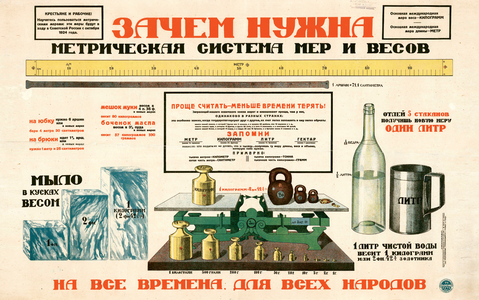Americans use 9 millimeters at school all the time.
How many football fields is that
About 82 nanofields
What’s the ratio of nanofields to millimeters?
About 82 to 9
Hilarious.
There is a business opportunity there for 0.35 inches Freedom Guns
Freedom units!!!
(No, we really should get it over with at some point…)
Here is an alternative Piped link(s):
https://piped.video/JYqfVE-fykk
Piped is a privacy-respecting open-source alternative frontend to YouTube.
I’m open-source; check me out at GitHub.
If we switched to metric, everything we currently have built will suddenly have weird measurements. I don’t want my 10 foot even high ceiling to be 3.048 meters. 😩 /s
Yep, this is why all the buildings spontaneously exploded in places that changed to metric. /s
Things get phased out. Certain buildings will adhere to old code and new ones would adhere to new codes in metric.
If you pretend to be a confused foreigner you can make them do math
The irony is a real foreigner could probably do maths better than them.
Suddenly trying to convince all my friends and family I’m from France.
You could always use the metric system, that was always allowed. Most food (I’ve seen) has both imperial and metric measurements. Most digital measuring devices and lots of analog ones will have options for both. Speedometers generally have both.
Really, the only one stopping you from using the metric system in your daily life is you. Unless of course you’re saying you want other people to use it. Which is a distinctly different proposition.
I’d argue the two greatest barriers for the average, non-STEM individual adopting metric in America is the speed limits being in mph and the temperature being in °F. Both are convertible easily enough, but when you constantly have to do so to engage with critical infrastructure or safety (cooking temps, etc.) It provides a barrier against adoption for anyone without the drive to make a concerted effort to use metric.
In the UK we’re mostly using metric with the odd exception (we still love a pint of beer), one of which is that speeds are measured in MPH. It’s not really a big deal, there aren’t many customers between miles and kilometres and anything less than a km is still usually measured in metres.
thanks to shrinkflation, all pints are now schooners. Tomorrow, middies.
Between the two, I think temperature is the harder one. But strangely, it also brings weight and volume back into it: Cookbooks.
So many recipes are finely tuned balances of measurements that just look plain alien when converted to metric.
I think we were the first with metric money? We still pay for things in centidollars.
Why do Americans call the decimal system “metric”?
They’re different things. The metric system uses decimal. All metric units are decimals, but not all decimals are metric measurements.
You’re right that money is decimal, not metric.
Because that’s it’s name
https://en.m.wikipedia.org/wiki/Metric_system
But if you wanna get all specific about it we can call it SI
https://en.m.wikipedia.org/wiki/International_System_of_Units
It’s certainly not the Decimal system
There’s no such thing as metric money. What are you talking about?
Sorry, I thought you were making a general comment. I didn’t realize you we’re criticizing the “metric money” statement.
But, reading over that person’s comment again they also say “centidollars”, which also doesn’t exist, so I believe they were trying to make the point that the US was the first to make a currency that seems to adhere to the same principles as the metric system since their currently since 1 centidollars = 1 cent = 1 dollar/100.
(I’m pretty sure it was a joke though. We don’t use kilodollars, etc)
Non-metric or non-decimal money is referring to systems where the multiple tiers of money, like our cents and dollars, are seperated by amounts other than 10 or 100, like the old British system of 12 pence in a shilling and 20 shillings in a pound https://en.wikipedia.org/wiki/£sd
My Megadollar says otherwise.
Again, who’s gonna pay for the conversion? Sure we could switch like the Aussies did, but no one wants to pay for new shit when the shit that already exists serves its purpose well enough.
Get the financing, and then come back.
Just start doing it now and eventually things will have converted. It may take a while, but it will happen eventually if you do it consistently.
But there are too many contrarian Americans out there who’ll take inconvenience over logic just because it “the American way” or “America is special.” Have several of those people in my extended family.
Who’s gonna pay for not converting (which is much more expensive)?
just make all new things metric as the primary unit and US imperial as the secondary. eg. reverse the display on a speedometer
Seconding that. Slow phase is the way - as the old shit breaks, replace it with metric. Not just for cost, but to ease folks into it.

I’m not, but I’m old as shit, and don’t really give a fuck.
Old people using inches: https://youtu.be/EUpwa0je6_Y
Here is an alternative Piped link(s):
https://piped.video/EUpwa0je6_Y
Piped is a privacy-respecting open-source alternative frontend to YouTube.
I’m open-source; check me out at GitHub.
Top text: Why metric system is needed
Middle text is mostly blurred, but “easier to count - less time to waste” is seen.
Bottom text: for all times and for all people

Why are there angry European posts and comments on this every freaking day as if each and every one of us who live under the American system of weights and measurements are personally responsible for implementing and keeping the system?
I’m comfortable in either format.
It doesn’t chafe my balls to talk in metric or to see signs or containers in metric. Why does every god damned European feel like they’re missing out on diaper powder every time an American talks about miles or fahrenheit?
Who hurt you? What damage does this really cause you?
Are there no other fucking issues that matter? We’re gonna blow this whole fucking planet up if Jim Bob in Missouri doesn’t start talking in liters God damnit!
I would not mind if americans used whatever. As long as anything exported from america always!! used metric. As it is now we need 2 complete sets of nuts and bolts, pipes and fittings, tools and gizmos, csbles and connectors. Just imagine the space we could save in our shops and storages if we could /2 the requires spare part storage. Not to mention the time and frustration avoided when doing basically anything on almost anything.
Yeah it really only matters what you are comfortable with, if you get units you aren’t comfortable with then it gets confusing. I almost feel like metric folk don’t realize that the USA is like 50 EU states in size, and this disconnect causes them some rage at seeing imperial units. At the human level I still can’t comprehend Celsius, mostly cuz those numbers have meanings in fahrenheit, sure makes for some cognitive dissonance to heard 35 degrees thinking you would need snow gear to hearing it’s unbearably hot.
Each and every time this comes up. I say that I am familiar with the metric system and use it for quite a few things, but I specifically prefer woodworking in fractional inches because working in base 12 and power-of-two fractions is closer to the tasks I need to perform in the wood shop than base ten decimal math does.
I give real-world examples like “divide 19mm, a commonly used stock thickness, by three to make a tenon, you get something point 3333 repeating of course” and they 1. downvote and 2. Invent sizes that we don’t conventionally mill stock to thinking they found a “gotcha.” “Well what’s 2 inches divided by three?” we don’t mill stock to 2 inches thick, we’d use 1 1/2", a third of which is 1/2". Y’all actually do use 19mm.
But Americans use inch fractions so inch fractions must be dumb and bad, right?
Did you know you can use fractions with metric units? 1/3m is a thing.
You want to show me a tape measure, caliper or micrometer marked in thirds of a millimeter?
deleted by creator
You don’t need a tape to find a third. Just like you don’t need one to find a half. If you’re a woodworker, you’ll be using a centre finder. And it’s not hard to make one to find thirds. Just take a plank of wood and put four holes at equal distances, then insert two short dowels into the furthest holes.
I kinda thought the title made it clear I was an American.
The subject in and of itself is just exhausting
then you can’t claim you’re not responsible for keeping the system. the fact that you get exhausted by merely seeing someone say “hey metric would be nice” is why you won’t change. not just this but a ton of archaic stuff everyone else in the world has moved on from.
Look I get it, but also, I like fahrenheit and miles. They are more intuitive and closer to the ‘feeling’. 100 degrees is really hot. 100 mph is really fast. Maybe that’s my own bias from growing up with it though
I feel the same way about Fahrenheit, but boy do people hate it when you say it out loud.
I’ve never had to use Kilometers much but I’m sure I wouldn’t have much trouble adapting to that as much.
Yeah, I think it’s mostly just a familiarity thing. To me 0°C is cold af, 10°C is chilly, 20°C is nice and 30°C is hot. 100 km/h is fast but not really fast, though I’m probably biased in this regard from regularly driving on the Autobahn lol
Out of curiosity, what would you consider “too cold to go out”? Not really about the metric/celcius system, but 0c is light jacket weather for me.
Anything below or around zero degrees is undershirt, shirt, sweater and warm jacket weather for me. Though it rarely gets colder than single negative digits where I live. I’ll go with a light jacket from like 10-15 degrees upwards. I can’t handle the cold very well lol.
The temperatures are intuitive for me because Celsius is all I’ve known. The car going 60km/h or 100km/ h I know the difference and how it feels sitting in the car. The speed of wind in the forecast needs to be m/s to make any sense. Over 20 m/s I better tape the windows so that the storm won’t break them
exactly! whenever anyone says imperial units are “more intuitive” and better reflect “how it feels to humans”, i can only think: obviously, you grew up with it. that’s what you know.
no matter what measurement system you were raised on, it will feel intuitive to you and reflect how you as a human experience the world because you are used to measuring things in those units. having said that, i’d much rather we used metric if for nothing else than the ease of unit conversion.
When it comes to Fahrenheit, there is some merit to the idea - 0 to 30 is a small scale compared to 0 to 100, and unlike Imperial vs. Metric, Celcius has no base 10 system that makes any more sense than Fahrenheit does. . The opposite is true of kilometers and miles - kilometers is more refined since each unit is a shorter distance.
I’d prefer the Metric system, but Farenheit over Celcius for temperature measurement.
The fixed points (for 0 and 100) are much more logical though and can be used to accurately recreate the scale anywhere (well… it’ll be slightly off on higher altitude since boiling temperature changes but it’s still not far off).
0°C = water freezes (= it’s snowing)
100°C = water boils
meanwhile:
0°F = the coldest night Mr Fahrenheit experienced, thinking it couldn’t get any colder than that
100°F = Mr Fahrenheit’s own body temperature (he had a slight fever apparently)
How would you recreate that??
I am not water.
The temperature of water boiling is not a useful metric when it comes to the weather, as it’s extremely far outside of where humans can live. Science uses Celcius standard, and that seems to work fine, but I see no reason why we should use it for the weather.
I think we can agree that the freezing point is super important when it comes to the weather.
So where would you place the second mark (you have to define two spots) so it “makes sense for the weather” (I don’t see how it makes less sense for the weather than Fahrenheit, at least Celsius tells you if it’ll snow or not while Fahrenheit tells you nothing) while still making sure that it can easily be recreated?
The temperature of ice melting, on the other hand, is hugely important for weather. 0 point is placed at a very important spot as far as weather observations go.
Can’t say that of Fahrenheit.
We’ll just keep things as they are becuase it seems to be working fine.
Yeah, and the benefits of switching does not out weigh the costs, like redoing all the signage and re-educating everyone and inevitable higher accident rate.
That’s an artefact of the “now”.
In Australia we once had the imperial system and about a year after the big switch (14 Feb 1966) we became all metric like a mofo. Now 35c feels hot and 15c feels cold. Plus units of ten is so much easier than factions.
Ask the US military about the metric system, they’ve been using it since at least Vietnam, if not earlier.
As an army vet. No we don’t. Never once in the military did I use Celsius. For distances we used both. I have pictures from inside my vehicles where the speedo was in miles.
Fair enough, I’m an Australian vet, and the US guys we worked with used kilometres. I must have generalised.i withdraw my comment. 🙂
Not only is 100C is also really hot, it’s the boiling point of water. Now that’s a 100 degrees that really stands for something.
I also find inches easier to work with unless I’m making something with my 3d printer. Fractions are just easier when you’re making something big with looser tolerances.
3 2/10 cm is easier than 3.2cm?
Doing things in 1/16ths of an inch is easier than metric for like woodworking and such IMO. Especially since most tools and materials come in inches here. Until you get into stuff that has tighter tolerances than 1/16th of an inch. Even then you could go to .010s or .001s of an inch but I’m more used to metric at that scale and that’s what the applications I use for 3d printing default to.
you don’t get it.
your tools and materials will come in metric when everything is metric.
doing things on 1/10 of an inch or 1/10 of a cm is the same as 0.1 inches or 0.1 cm.
1/16 = 0.0625
3/16 of an inch = 0.1875 inches
as in “1/16th” literally means “one divided by sixteen, so do extra math instead of just giving you the real number”
decimal doesn’t mean, nor have anything to do with metric.
So I have to throw out all my stuff and spend $1000s on new tools?
You don’t work in 1/10ths of an inch. It’s 1/16ths and that that’s where the math ends. You don’t need to convert it to decimal. Unless you’re doing machining which you do work in .0001ths due to the tighter tolerances and I’ve already agreed you might as well use metric for that.
you’re talking about two or three different, unrelated things.
- decimals vs fractions - you’re whining that 1/16 gives you more leeway, but too stupid to realise that 1/10 is less precise and is the same as 0.1
So either you’re happy with less precision - and decimals are good, or you want more precision - and decimals are still good.
Again - absolutely nothing to do with metric. You can convert 3 3/4 inches to 3.75 inches, 3 12/16ths or 3 7.5/10ths of an inch. They’re all the same thing and all imperial.
-
Tools. The topic is “using metric”. Once you have all metric tools, then it doesn’t matter. You’re trying to change the topic to buying new tools. Unrelated. Using a tool vs shopping like a princess for new toys. We’re talking about using tools.
-
but hey, while we’re on the topic of how dumb you are, let’s keep using what you say against you. You keep saying “it doesn’t have to be that accurate” well, okay then. then get a sharpie, write the approximate metric conversion on the side and get on with your life. A 5 minute job for someone who I presume can write numbers and count to ten?
-
I knew there were more. What you don’t get, what you keep missing, is that 1/16 is smaller than 1/10. that means your bitching about “tighter tolerances” applies more to dicking about with 1/16ths instead of 1/10s (which again, is decimals, nothing to do with metric)
If you can’t have a civil conversation without insults I’m not going to bother with you anymore. We’re talking about units of measurement, there’s no reason to be an asshole. Go fuck yourself.
you don’t get it. […] decimal doesn’t mean[…]
No, you’re not getting it. 1/16 isn’t a function of a decimal system. It’s base 2. Primarily because you don’t really deal with 1/10th of something, but half of a half sort of stuff.
1/2, 1/4, 1/8, 1/16…
2-1, 2-2, 2-3, 2-4…
And base-2 functions make sense in wood working in general because of it’s imprecise nature. It’s more useful to compare things in halves. A 2x2 piece of wood is not literally 2inches x 2inches. Even in Europe you guys follow weird numbers for finished wood dimensions. It doesn’t make sense to have such precision when nothing about it is precise.
1/16 of an inch is slightly smaller than a millimeter, you’d just end up using a millimeter or half again as your tolerance limit.
The big issue with imperial is all the fractions and strange conversions. On more then one occasion I’ve caught myself mixing up eighths and quarters, because my brain views them more as concepts then as numbers. Which is bigger, 11/16 or 3/4? Now, you’ll get the answer, sure, but you had to think about it and it goes against the natural intuition that larger numbers are bigger. Compare that with, which is bigger 0.6875 or 0.75 and it should be trivial to see which is easier to learn and use.
0.6875 is basically a meaningless concept to me when I try to picture it in my head and what if you need to add it to another dimension? It’s not easy to work 4 decimal places in your head. .75 only works because I automatically convert it to 3/4. Maybe it’s just something that comes with experience but I don’t have trouble with knowing what’s what. If your not sure you can always make the denominator equal and figure it that way. 3/4=12/16 for instance. Easy math to do in your head.
Sure, but your measuring system dictates what lengths you actually design things to be. You would never actually use 0.6875, but if some jerk designed something with that length, it will be easy to tell exactly how big it was. If you switched to metric, your smallest practical unit for woodworking would almost certainly be a millimeter.
The problem is everything is already built using the imperial measurements. Even if we switched all the new tools and materials over to metric we’d be stuck having to do a bunch of conversions when we’re integrating it into existing construction and we’d probably be dealing with that for the rest of our lives.
How would you even measure “They are more intuitive and closer to the ‘feeling’”. It’s not. You’re used to it. No one else in the world that grew up with C is going to find F more intuitive. Neither miles.
“intuitive” in the sense you described just means “familiar”. One feels like one. Ten feels like ten.
The magic of metric isn’t that each base unit is somehow more valuable in metric. It isn’t. One will always feel like one.
The magic is how easy it is to convert from the “small one”, the “medium one” and the “big one”.
Also, the convention of fractional inches is ridiculous.
It should be trivial to order 27/64, 3/8, and 7/16. Don’t make me do that math.
Hard disagree on the fractional units. Using rational numbers for those things derives from the frequency with which people need to double and halve things in the fields that use those conventions. Doubling 3/8 to get 6/8 or 3/4 is much easier than doubling .375 to get .75
That one’s nothing to do with the metric system vs imperial, aside from the fields that rely on the convention being largely the ones that created imperial in the first place. If they all switched to metric tomorrow they’d just say they need 3/5 meter spacing.
Does Germany use 3/5m spacing?
I looked it up and they use 2/5 meter spacing. Some other countries nearby use 3/5th though.
And it’s described locally as 2/5 and 3/5, rather than 40 or 60 cm?
If so, I’m shocked, but delighted to have learned something unexpected
From everything I’ve heard it’s a hodge podge, since the US, with the worst system, is the only one to use it consistently. Building plans would reference it by cm however.
What I was more referring to was from the perspective of the carpenter doing the work.
Fractions or decimals aren’t specific to us customary or metric. You see decimal inches perfectly often, or at least I do.
Fractions are a more convenient way of dealing with multiplying or dividing numbers without a lot of mental effort. 1/3 of .125 is gonna take a second to figure out. 1/3 of 1/8 is 1/24. 5 1/8 units is just ”5/8”, rather than the .625 in decimal.
It’s definitely less effective for numerical sorting in your head, but if I’m sorting screws or something, I’m probably gonna just look at them rather than compare the labels.I understand the underlying principle, but I’m not sure if it actually shakes out that way for a few reasons:
If you asked a carpenter to cut something to 1/24", they’d be like “what?”. Sure, the math was easier, but the result is unusable. No measuring instrument has divisions of 24ths. The person making a cut would need it in terms of 8ths, 16ths, etc. Any time saved at the initial stage is lost when they need to convert it again to a useable denominator.
Secondly, what’s 3/32nds of 17/128ths?
The examples you give are harder in decimal form because nobody is going to make metric carpentry designs for things that are to the tenth of a millimeter, so 1.25cm isn’t even real.
I admit, there are a lot of specific scenarios where fractional convention is helpful. I just personally think they don’t outweigh the drawbacks.
I’m a European living in the UK for 9 years. I still don’t know what a mile is. There’s nothing intuitive about Imperial units, you’re just used to them.
It’s here Sunshine. And it’s been the law, for what 50 years now?
So go to the store and buy a 2 liter of your favorite soda pop, 454g of butter, 2 1/4kilos of potatoes, a half kilo of tomatoes, and a 750ml bottle of whisk(e)y. Then get out your wrenches and use the 10mm to tighten that wobbly leg on that chair. Oh, your 10mm wrench is missing too? Well, do you have a 160mm adjustable wrench? No? I have one here in my tool box use that one.
Oh, you want it in your car? You either just need to read the other scale printed on the speedometer or just push a button. Instant metric system.
The metric system is here. You use it and your too blind to see it…Most 'Muricans are either trying too hard to be edgy or they are just dumb I guess.
deleted by creator
We should have gone metric in the 70s. This year will be the 45th anniversary of the Metric Conversion Act, which was signed on December 23, 1975, by President Gerald R. Ford. You may have even seen a map that has been incriminatingly illustrated to show how they are out of step with the rest of the world. It’s a compelling story and often repeated, but you might be surprised to learn that it’s simply untrue!
I’m in favor of freedom, don’t force metric or customary on anyone. Let people measure things they way they want.
you must hate the towel of babel story in the bible.





















